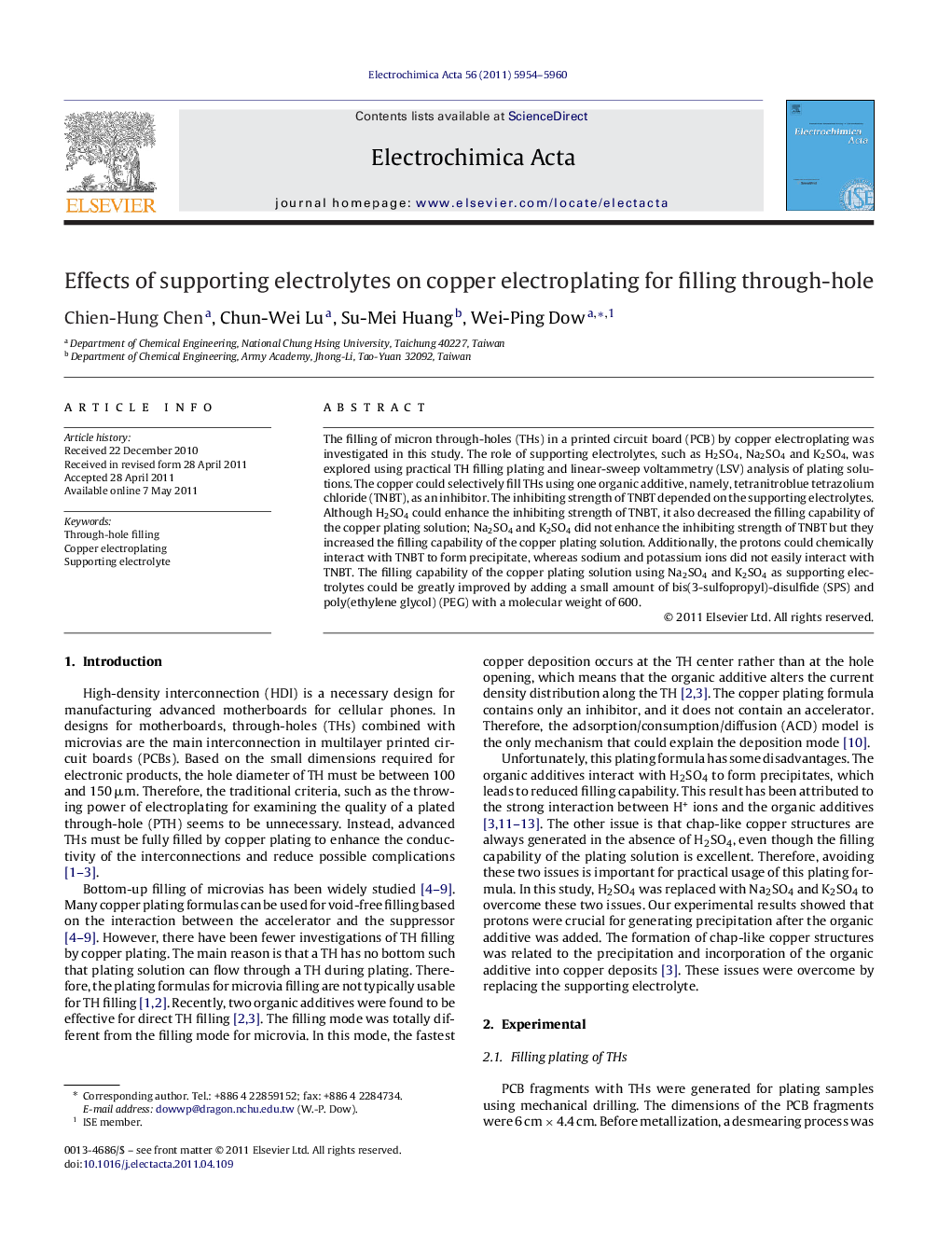| Article ID | Journal | Published Year | Pages | File Type |
|---|---|---|---|---|
| 189588 | Electrochimica Acta | 2011 | 7 Pages |
The filling of micron through-holes (THs) in a printed circuit board (PCB) by copper electroplating was investigated in this study. The role of supporting electrolytes, such as H2SO4, Na2SO4 and K2SO4, was explored using practical TH filling plating and linear-sweep voltammetry (LSV) analysis of plating solutions. The copper could selectively fill THs using one organic additive, namely, tetranitroblue tetrazolium chloride (TNBT), as an inhibitor. The inhibiting strength of TNBT depended on the supporting electrolytes. Although H2SO4 could enhance the inhibiting strength of TNBT, it also decreased the filling capability of the copper plating solution; Na2SO4 and K2SO4 did not enhance the inhibiting strength of TNBT but they increased the filling capability of the copper plating solution. Additionally, the protons could chemically interact with TNBT to form precipitate, whereas sodium and potassium ions did not easily interact with TNBT. The filling capability of the copper plating solution using Na2SO4 and K2SO4 as supporting electrolytes could be greatly improved by adding a small amount of bis(3-sulfopropyl)-disulfide (SPS) and poly(ethylene glycol) (PEG) with a molecular weight of 600.
► The through-holes of a printed circuit boardare directly filled by copper electroplating using single organic additive. ► The inhibiting strength of the additive on copper deposition is related to a supporting electrolyte. ► H2SO4 strongly enhances the inhibiting strength of the additive and results in a conformal deposition, whereas Na2SO4 and K2SO4 do not affect the inhibiting strength and lead to good filling capability.
